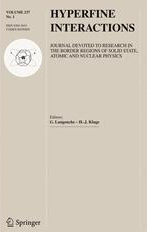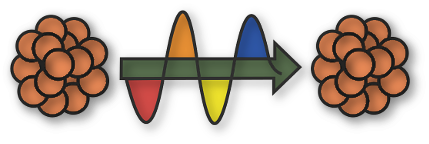ISIAME 2020 Proceedings

The conference proceedings will be published in the journal Hyperfine Interactions (published by Springer Nature). Invited talks as well as oral and poster presentations will be included in the conference proceedings. All manuscripts will be peer reviewed according to standard international procedures before being accepted for publication in the conference proceedings.
Submission
The procedure for submitting manuscripts is the same as for other conference proceedings (e.g. ICAME) published in Hyperfine Interactions. It is important to notice that there is no a priori page limit. Authors are free to use as many pages as necessary. Referees might object to manuscripts which are unnecessarily long.
Papers have to be submitted via the Hyperfine Interactions website https://www.springer.com/journal/10751 by clicking on the button “submit manuscript”. Under the Details tab, the authors should choose the name of the conference from the drop-down list (ISIAME2022).
Deadline
Authors can still submit manuscripts. They are invited to send an e-mail to the editor at hyperfine.interactions@kuleuven.be in order to seek an agreement about a time schedule for submission of their manuscript.
Open Access
With the consent of Springer Nature, publisher of Hyperfine Interactions, the final accepted version of all peer reviewed and accepted conference manuscripts will be published on the website of the Mössbauer Effect Data Center together with the conference manuscripts of the most recent ICAME, ISIAME and LACAME conferences. It is the purpose to keep using this database as a repository for Mössbauer conference proceedings in order to facilitate access for the scientific community.
All these conference manuscripts can be downloaded from this website free of charge.
To assist correct citation of the conference articles clear indications are given of the corresponding Hyperfine Interactions issues and page numbers.
Please notice that this free open access offered to the conference participants and their community is different from the open access offered to the authors, against payment, by Springer Nature upon publication of their manuscript.
About the Hyperfine Interactions journal
Hyperfine Interactions was created in 1975 as a scientific journal with a strict peer review procedure, with the main purpose to publish conference proceedings in the border region between nuclear physics, atomic physics and solid state physics.
The present publisher is Springer Nature. Since May 2015 the scope of this publisher has broadened through the merger of Springer Science & Business Media with the Nature Publishing Group, Palgrave Macmillan and Macmillan Education.
Articles published in Hyperfine Interactions are listed and fully indexed by search and indexing databases such as Web of Science, Google Scholar and Scopus. In 2008 Web of Science split their journals database into two: the traditional journals part and a new proceedings part, and they moved all journals they decided to be proceedings journals, including Hyperfine Interactions, into that new database. Since then Web of Science only publishes impact indices for journals in their journals database, not for journals in their proceedings database.
However, citations to articles in Hyperfine Interactions are still measured and included as they had been before by Web of Science.
Journal metrics values for Hyperfine Interactions can be found at the websites of different ranking agencies, such as:
- Citescore 2017 = 0.66 [http://www.springer.com/physics/particle+and+nuclear+physics/journal/10751]
- RG Impact Ranking 2018 = 0,92 [https://www.researchgate.net/journal/1572-9540_Hyperfine_Interactions]
Partner Journal




